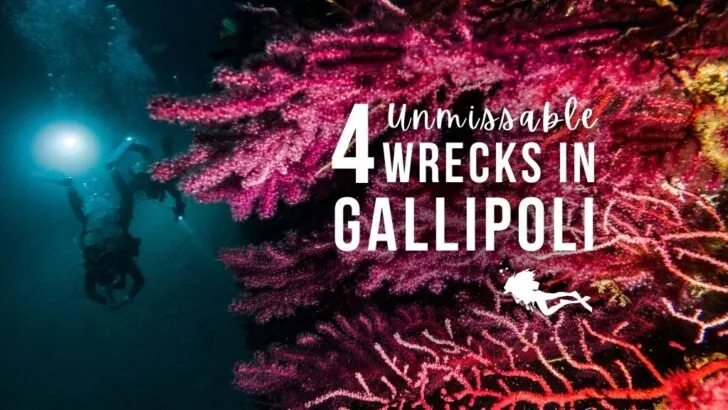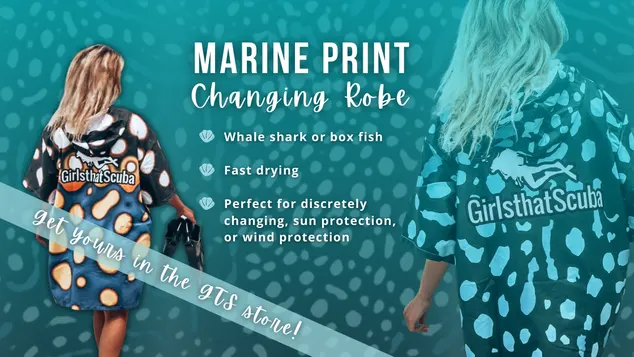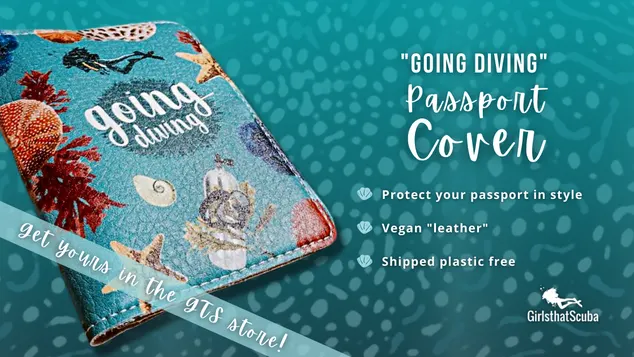Searching for an underwater adventure where you can dive into historic WW1 shipwrecks? Then scuba diving in Gallipoli, Turkey might be just what you’re looking for!
Gallipoli in Türkiye is renowned for its poignant history, marked by the infamous World War I battle that unfolded along its shores. Beyond its wartime significance, this coastal gem offers a different kind of exploration beneath the waves.
Home to 19 remarkable wrecks, Gallipoli’s underwater world presents a unique opportunity for scuba divers to delve into maritime history with the excellent visibility of the Aegean Sea.
Gallipoli – The Basics
Gallipoli occupies a prime spot along the Dardanelles Strait, connecting the Aegean Sea to the Sea of Marmara. This strategic location has made Gallipoli a pivotal point in history. It has been witness to battles and trade routes over the centuries.
Travelling to Gallipoli is convenient with major airports nearby. Istanbul Atatürk Airport (ISL) and Sabiha Gökçen International Airport (SAW) serve as primary gateways. From these airports, a leisurely drive or a scenic ferry ride will transport you to the charming shores of Gallipoli.
Gallipoli Above the Surface
Above the waterline, Gallipoli exudes a unique charm with its blend of historical sites, cultural experiences, and delectable cuisine. The Gelibolu Peninsula Historical National Park is a testament to the area’s past, housing memorials, trenches, and battlefields from World War I. The Gallipoli War Museum offers an immersive look into the events of the battle, allowing visitors to connect with the past on a profound level.
To explore diving in Gallipoli, you’ll want to stay in the Çanakkale region of Turkey. Indulge your tastebuds in Çanakkale’s culinary delights, which reflect the region’s coastal influence. From freshly caught seafood to traditional Turkish dishes, every meal is a celebration of flavours.
Don’t miss out on trying “keşkek,” a local dish made from wheat and meat, or “mıhlama,” a hearty cornmeal and cheese delight.
Historical Wrecks
Scuba diving in Gallipoli beckons adventurers, history enthusiasts, and those seeking an authentic cultural experience. Whether you’re exploring wrecks beneath the waves, discovering the historical significance of the peninsula, or indulging in the local delicacies, every moment in Gallipoli is an opportunity to embrace the beauty of the past and the richness of the present.
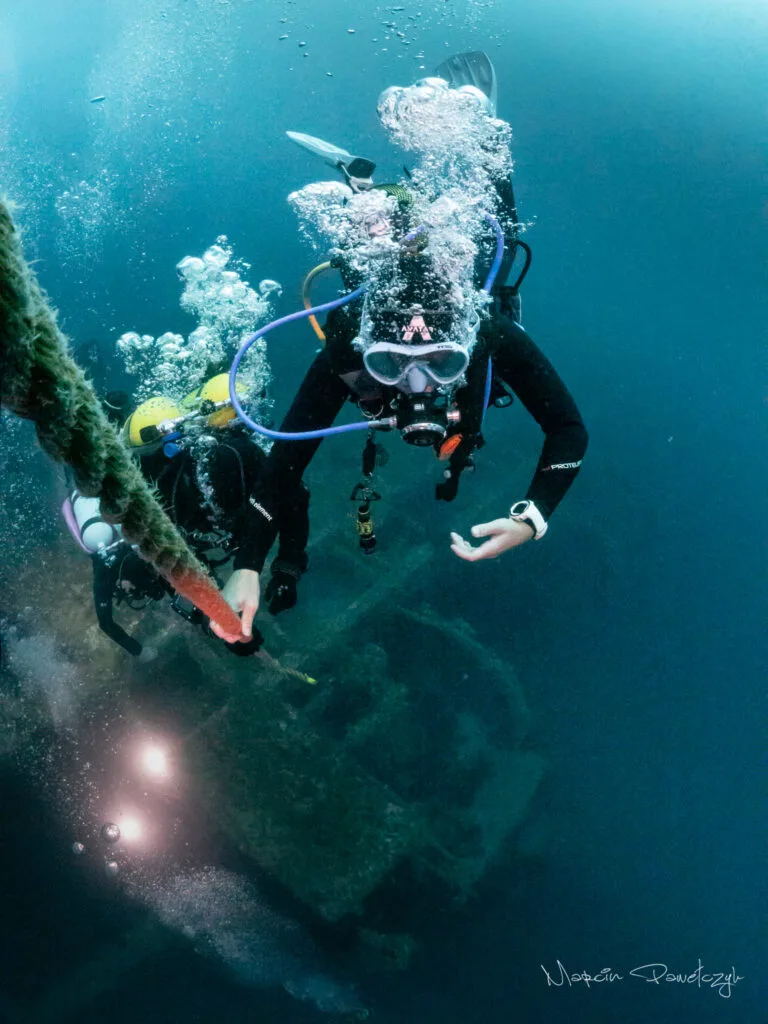
The underwater world of Gallipoli is adorned with wrecks that echo the tales of the past. With over 15 iconic warships at a variety of depths for the entry level diver to technical divers, these sites provide divers with the chance to explore history while surrounded by vibrant marine life. The HMS Majestic also offers fascinating insights into the area’s naval heritage, making each dive a journey through time.
What are the dive conditions like in Gallipoli?
The surface water temperature varies throughout the year, from a mild 15°C (59°F) in winter to a more inviting 25°C (77°F) in summer. At the depth of the wrecks, the temperature can drop considerably to about 17°C (62°F) in summer and possibly colder during the winter months.
It’s essential to choose exposure suits accordingly. This will depend on your personal comfort, but can range from a 5mm wetsuit with layers to a complete drysuit. Choosing the right exposure suit will make for a comfortable and memorable dive experience!
What can I see when I’m scuba diving in Gallipoli?
When you venture beneath the waves while scuba diving in Gallipoli, you’ll be treated to a mesmerising world that showcases an impressive inventory of historical wrecks. There are 19 wrecks in total, but 4 of our favourites are highlighted below. Here’s a glimpse of what you can expect to see during your scuba diving expedition in Gallipoli:
1. HMS Majestic
Behold HMS Majestic, born between 1893 and 1895 at Portsmouth Shipyards, a pre-dreadnought battleship of grandeur. A weighty titan at 14,900 tons, she embarked on her maiden voyage as the Channel Fleet’s flagship, an unwavering guardian of England’s southern shores.
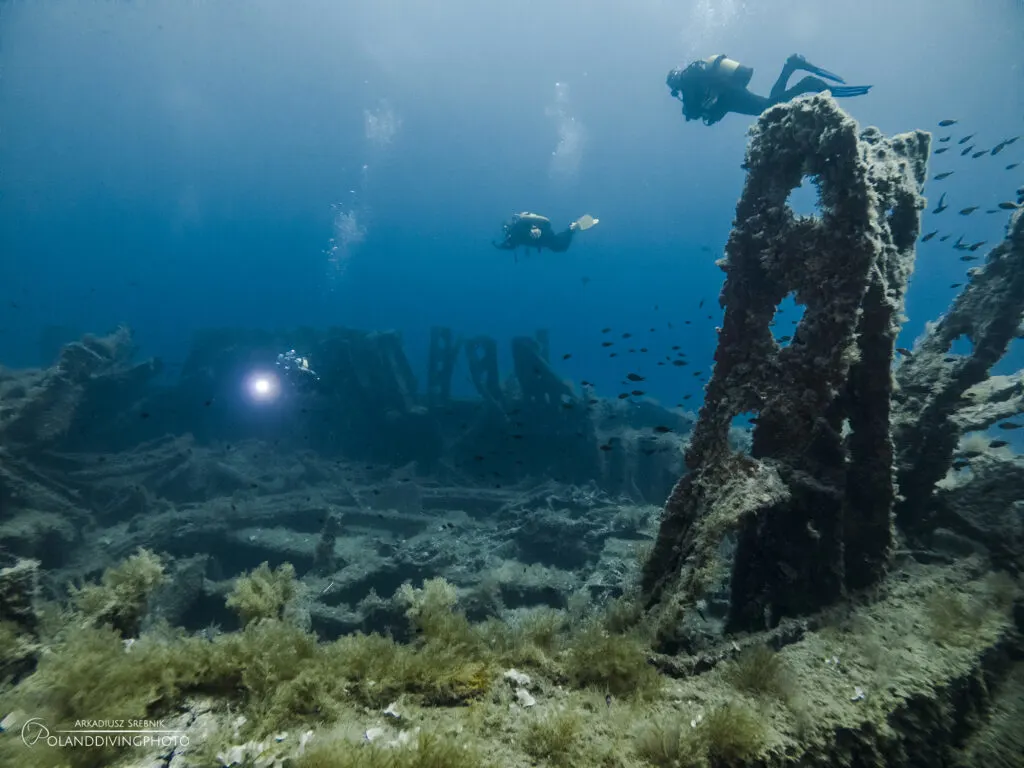
Churchill, with reservations about her age, saw her embark on an unexpected role in Gallipoli. HMS Majestic aimed to navigate the Dardanelles and reach distant Istanbul, challenging the odds.
Majestic braved the assaults on the Dardanelles in March 1915, standing tall in the face of adversity. She engaged in the final, valiant endeavour led by the 2nd Royal Marine Division on March 18, 1915, striving to conquer the strategic strait.
Yet, destiny’s course led her to encounter the fangs of the German submarine U-21 on May 27, 1915. Surrounded by anti-torpedo nets, she succumbed to the depths, a victim of relentless forces.
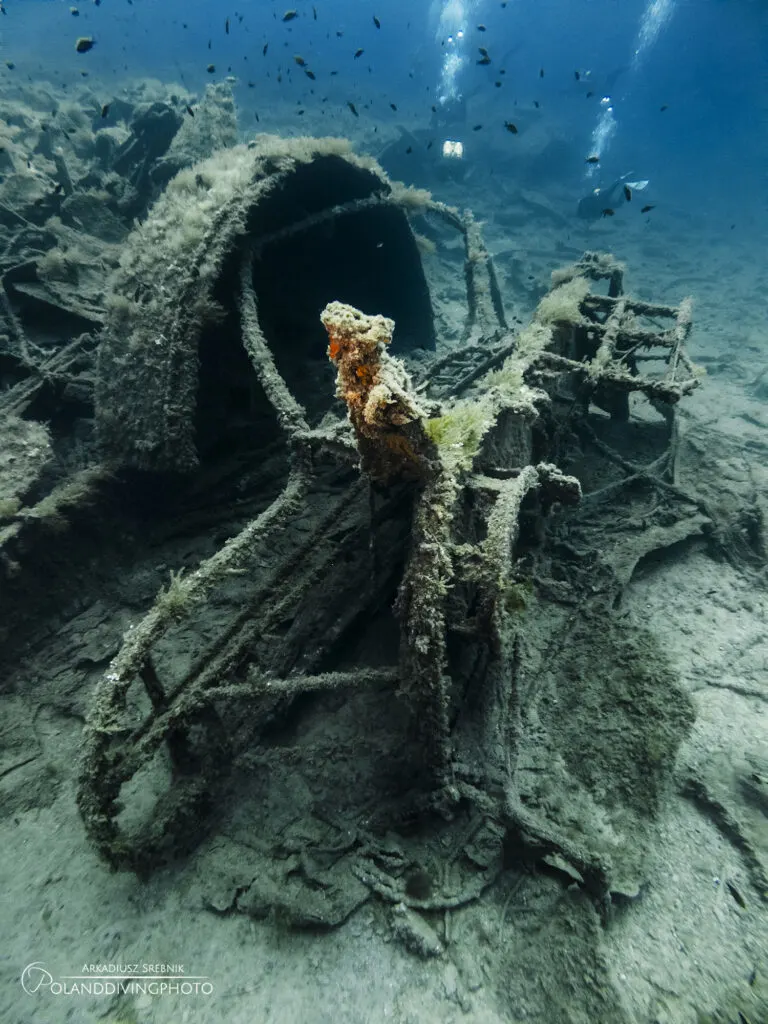
In our time, the echo of HMS Majestic endures. Resting within a watery embrace, she beckons daring souls. Diving enthusiasts can traverse the depths, encountering a wartime sentinel. Off Seddulbahir, at a depth of 18-23m (59-75 feet), this shipwreck stands as a poignant testament to history’s unyielding grasp.
2. HMS Louis
HMS Louis, constructed in 1912, experienced damage after colliding with a tugboat on October 30, 1915. It ran aground serving during the Gallipoli battles, under Harold Dallas Adair-Hall’s command.
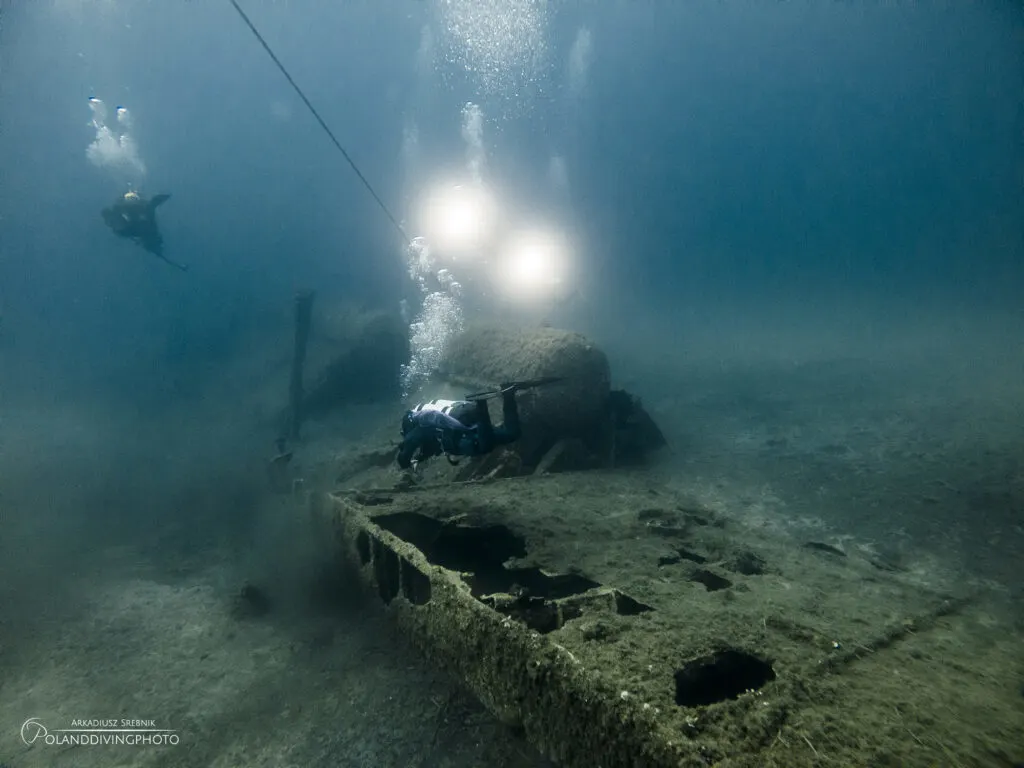
This ship specialised in nocturnal rescue operations, its camouflage blending seamlessly with the rocks, strategically avoiding Turkish artillery detection. Weighing 965 tons and stretching 82m (269 feet) in length, a significant portion – 45m (148 feet) – of the wreck is visible, while the remainder rests beneath sandy depths.
Lying at a shallow 13m (43 feet), the HMS Louis invites exploration even for Open Water Divers. The wreck boasts four well-preserved Yarrow-type cauldrons, a testament to its enduring legacy and historical significance.
3. Lundy
In the serene expanse of Suvla Bay, the stately figure of the Lundy graced the maritime landscape. Crafted in the shipbuilding crucible of Beverley, England, back in 1908, this remarkable vessel emerged as a paragon of British shipbuilding prowess.
Tipping the scales at an impressive 188 tons, the Lundy commanded attention with her sheer presence. Bolstered by a Smith brand engine, a hallmark of engineering excellence, she charted waters beyond the realm of military exploits.
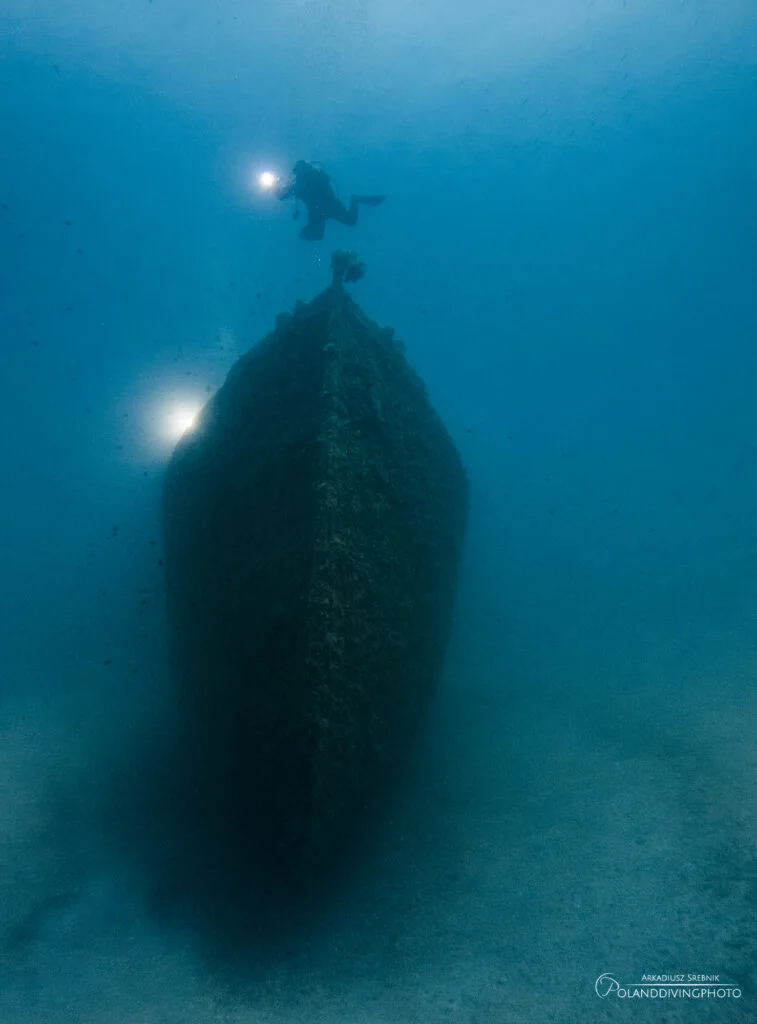
Yet, as the tempest of the Dardanelles Campaign raged, the Lundy received her clarion call – to metamorphose into a vigilant minesweeper, safeguarding treacherous waters.
It was the sombre day of August 16, 1915, when fate cast its intricate threads, binding the Lundy’s story with the vessel Kalyan. Amidst the choreography of ammunition loading, a collision altered destinies.
Kalyan, seeking sanctuary from the relentless barrage of Turkish gunfire, intertwined with the Lundy. The collision sealed Lundy’s fate, sending her to the embrace of Suvla Bay’s depths, where she rests at a profound 27m (89 feet) below the surface.
A century adrift from that pivotal day, the Lundy’s legacy lives on. Cradled by the bay’s azure depths, the ship remains a poignant tribute to a bygone era. The passage of time has bestowed a weathered grace upon her stern, yet her essence endures, a sentinel to the unfolding history on that poignant August day.
4. Franco
Meet Franco, a cargo ship under the Greek flag, laden with raw asphalt materials. The upper realm rests at 26m (85 feet), while 44m (144 feet) below, the depths whisper secrets. It leans close to the shore, in a posture of intrigue.
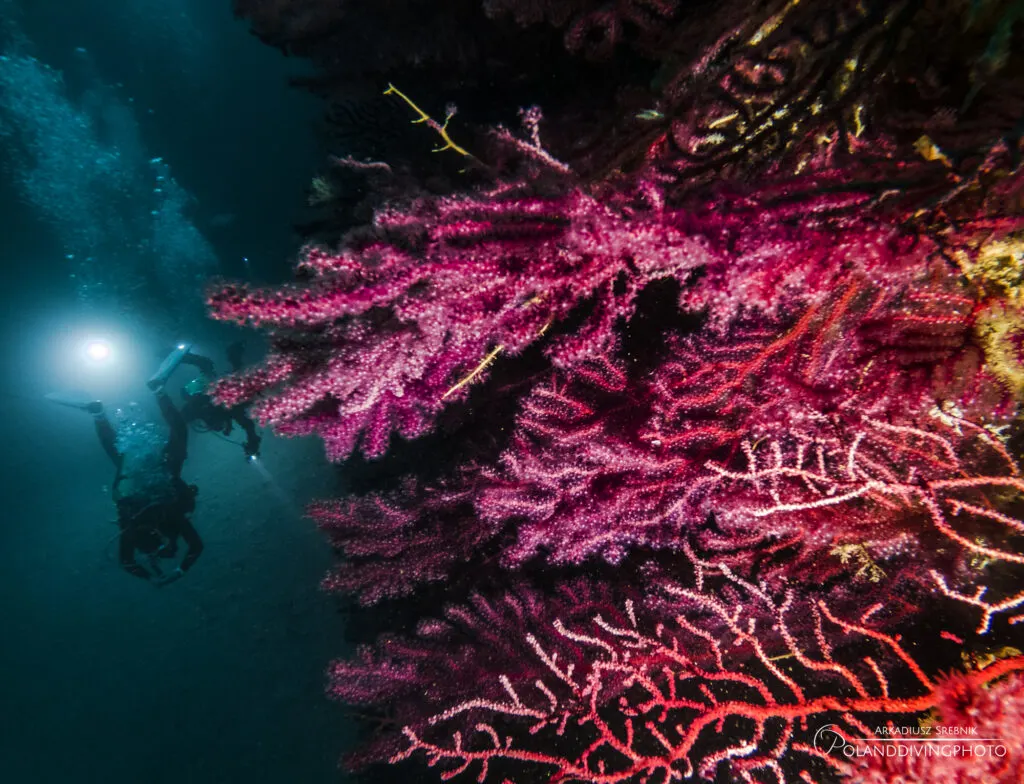
This colossal relic stands steadfast, a sentinel of history’s embrace. Unbroken, it rests, inviting those who dare to explore. With the potential for strong currents, this wreck invites the more experienced diver.
Around the wreck, a marine tapestry unfurls. Life teems, an orchestra of vibrant existence. Coral formations emerge like an artist’s canvas on the ship’s hull. Within these waters, a rarity resides – the endangered red corals, a treasure held only by this sunken relic.
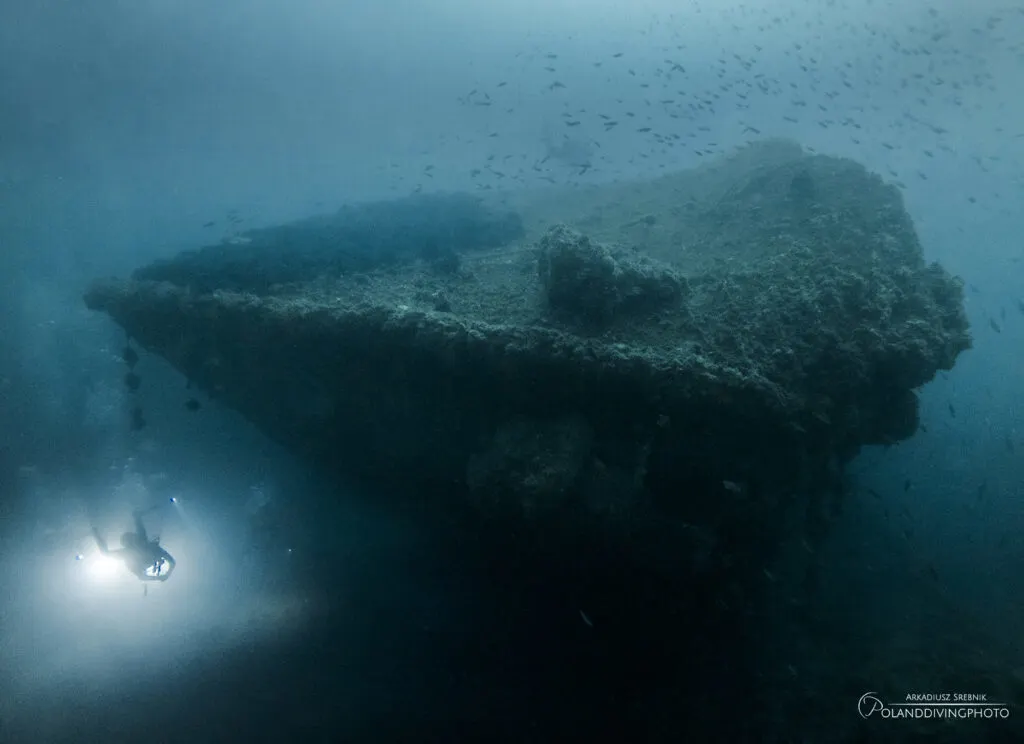
The Dardanelles’ submerged heritage echoes louder than history. It nurtures the underwater realm, a haven for marine life.
Looking for more diving in Turkey? Check out our guide to diving in Kaş!
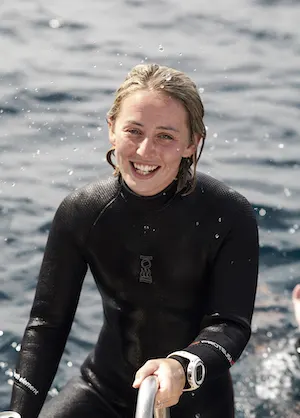
About the Author
Meet Ellie – host of the Girls Talk Scuba podcast, PADI Speciality Instructor, and DAN Europe Ambassador, making waves from her base in vibrant Malaga, Spain. Fuelled by an immense passion for ocean conservation, she’s not just exploring dive locations – she’s unravelling underwater mysteries and diving into history’s secrets. Follow Ellie on Instagram!

